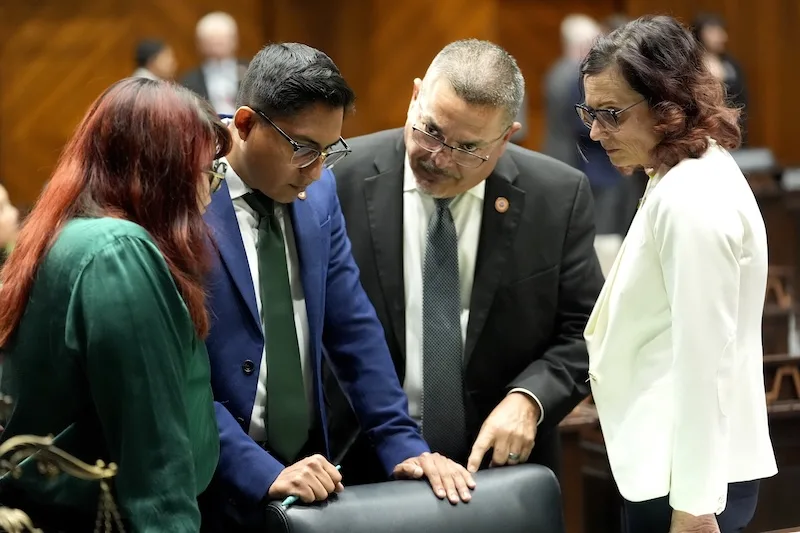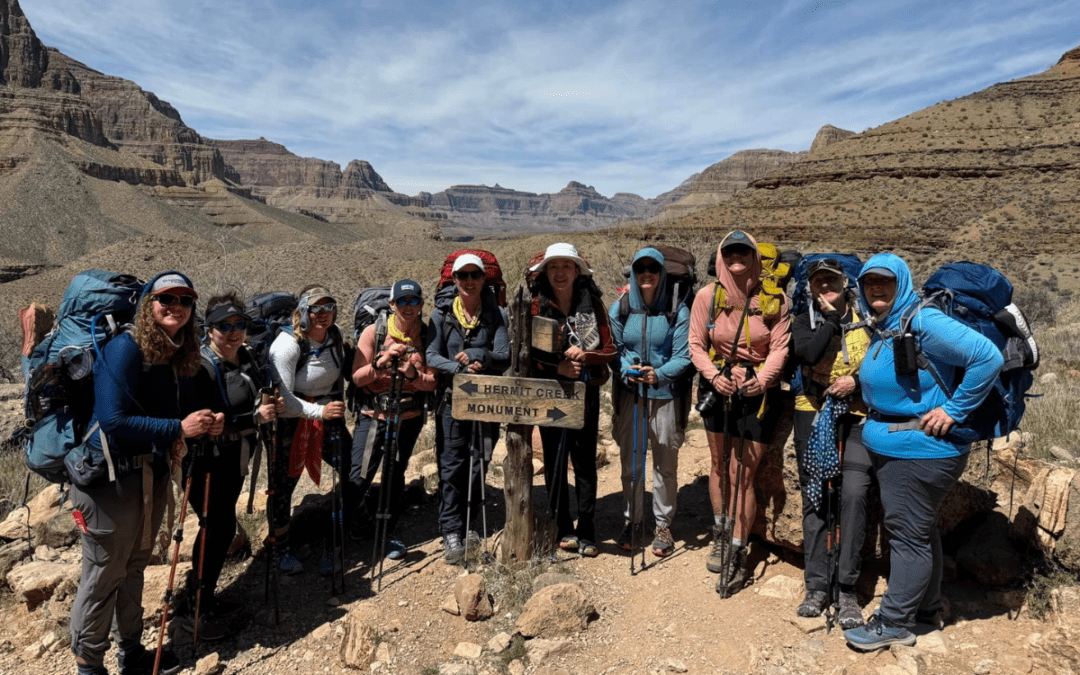
Former Starbucks union leader Bill Whitmire outside his new place of employment, Cortado Coffee Roasters. (Photo courtesy of Bill Whitmire)
“People are starting to take notice of how Starbucks is treating their workers.”
Starbucks employees and other labor-union supporters held a fundraiser on Aug. 13 to raise money for workers who had been retaliated against while trying to organize their stores.
At the event, former Starbucks shift supervisor Bill Whitmire answered questions from Dally Piña of Industrial Workers of the World.
Whitmire was part of organizing efforts at the store at Scottsdale Road and Mayo Boulevard. The location had their union election vote count in May, but the results were inconclusive due to the number of ballots challenged by the organizers and Starbucks. The final results are still moving through the National Labor Relations Board process.
Five Starbucks stores in Arizona have voted to unionize.
Note: This interview has been edited for length and clarity.
Dally Piña:
What are the common grievances at Starbucks? What gets people moving?
Bill Whitmire:
What gets people moving is, in our case and a lot of other cases, is started up with scheduling issues. What Starbucks promises is, ‘Come work with us and we’ll work with your schedule’. A lot of workers find that is not the case.
A lot of our workers at our store, and I know in a lot of other stores, they use the ASU benefits. Also, a lot of our workers are high school students, so they need flexibility in their schedules.
RELATED: Union Membership in Arizona Inches Up, Still Trails Most of the Nation
The way it works is with Starbucks, you have to give about four weeks notice to change your schedule and availability, and it’s well known that you have to do that, so people do that. They follow their procedures, and then management doesn’t work with them.
The other issue is wages. Depending on the area of the country you’re in, as a barista, your starting wage could be anywhere from $11 an hour to $15 an hour, and we don’t think that’s a livable wage.
And then you’ve got the healthcare issue. Most people think that Starbucks has great healthcare benefits, [but] it comes at a cost because you are not always able to keep those benefits.
In order to keep Starbucks benefits, you have to work an average of 20 hours a week, and then Starbucks audits you. So every July, Starbucks will audit your hours to make sure you have those. They total up your hours and then they do some calculation, and that has to come out to average 20 hours per week. If you’re not doing that, then you lose your benefits immediately—ASU benefits, health benefits, disability, life insurance.
Whatever benefits you might have, you’re going to lose them, and people don’t know that, so that’s another big one. Really, the big ones are wages, scheduling flexibility, and access to health benefits. That lit a fire under us.
DP:
What prompted you to take action?
BW:
I am a community activist and community organizer. I’ve never been involved in labor organizing, so I really didn’t know what I was getting into. What got me—my anger going or outrage going, if you will—was a lot of the things happening at our store.
Our store in particular, we were having a lot of staffing problems, so when the [COVID-19] Omicron variant was running rampant, our store got hit. Actually, it ran rampant through our entire district.
We told the district manager that the staffing shortages were causing us a lot of stress. She said, ‘Yes, you’re correct. We do have staffing problems.’ That’s how bad it was, but nothing ever changed. We were made a lot of promises, but those promises were never delivered upon, so my co-leader Laila [Dalton] and I started the union drive in our store.
RELATED: How a Tech Worker Is Making Union Membership Easier Than Ever
Laila had been advocating for a lot of change in our store for months and months and months, and she’d been talking to management. She’d been talking to district management, following all the proper procedures, going up the chain of command, and nothing was changing.
And the training I got as a supervisor was not the greatest training. Then I found out from our district manager that actually supervisor training is not consistent across the board of the company. That was a little bit disheartening to me that I worked for this huge corporation, but not every district or even every store’s on the same page when it comes to training the supervisor.
All of these things put together—long story short—I decided that it was time to organize our store, but I didn’t know how to do it. I knew about the union drive in Buffalo and that a couple stores were unionized. This is in mid-December, and I didn’t have any idea what I was doing.
I had no idea how to start a union, so I contacted the folks in Buffalo and started some conversations, and we had a couple of Zoom calls. They told us how to quietly go about organizing in our store, because it can be pretty dangerous and you can lose your job pretty fast, especially with Starbucks. You can lose your job pretty quick from organizing.
DP:
Once you started to get into the union effort, what was your biggest fear going into it? How would you say you overcame it?
BW:
The biggest fear with me happened to the Buffalo stores. So in Buffalo, what happened was— they called them SWAT teams, and that’s what they were—Starbucks executives from Seattle rented apartments in Buffalo and they hung out in Starbucks stores watching the staff.
That’s literally all they did all day long, is watch the staff. So these workers were under surveillance, so very, very high stress, obviously worried about their jobs, a lot going on.
Obviously, because of what happened in Buffalo, we were worried about our jobs. We were worried about what would happen to us.
What we were told was if we wanted to go about it, we had two weeks to go about it. We could go about it very methodically, or if we felt like we could put it together fast, we had a lot of support, we could go about it quickly—but we better go about it fast before management found out about it. Then once we filed for an election, we could go public, and then, hopefully, we wouldn’t be at such a high risk of losing our jobs.
DP:
Can you tell us a bit about when, at your store in particular, how you got retaliated against, and what was the first time you thought something was up?
BW:
We started going to workers, talking to workers about the union, getting workers to sign union cards. We started on a Friday. Twelve out of 19 workers had filled out union cards in two days, but management found out about it on Monday.
We didn’t know that at the time. The only reason I know this is because of some things that had come out in court cases and things like this. We had our hunches when we found out later when things came out in court that they didn’t in fact know by the 23rd.
Anyway, by Tuesday the 24th, we had our supervisor meeting, and my co-leader Laila got pulled in the back room, and our district manager and our store manager gave her 10 corrective action write-ups dating all the way back to November of 2021.
Actually, one of the write-ups was dated November of this year, so we had this running joke that they were pre-planning the stuff she was going to do wrong to write her up about. It was literally harassment—lasted for over an hour and a half.
I actually had the day off, surprise, surprise. I had the day off, so we were allowed to Zoom in to that supervisor meeting. So I wasn’t present when that happened, but they actually gave her a break to make a phone call, and she called me and told me what was going on. So yeah, that was a rough day for us.
Once things started in earnest, obviously Laila stood strong and she didn’t quit. [Their] strategy was, if they went after Laila, [they could] get rid of the union. That didn’t work, so then they came in with the surveillance to try to break us up or intimidate us.
There were cars in the parking lot all the time watching us. We have pictures. We have videos. Actually, a couple of pictures of people taking pictures of us, so this surveillance was very real that went on around the store.
Then there was a heavy management presence, so once we actually filed for election, then it really picked up inside the store. There were actually two store managers on duty at all times from the store, which never happens.
DP:
What kept you going? What kept you pushing, and why do you think the effort was worth it in the end?
BW:
What kept us going was we wanted to have the change because we all wanted better wages. We wanted better schedules.
Honestly, in our store, most of our workers are high school students or ASU students, so the healthcare insurance wasn’t much of an issue in my store. [It was] for me, because I’m an old guy, but for our workers, it was the wages and the ASU benefits, so that’s what kept our workers going is they really wanted those changes, and they still wanted to work for Starbucks. We’ve had some of our workers that were forced to quit because of the conditions.
They still wanted to work for Starbucks. Even after they left, they were like, “Once y’all win this election, once all this stuff is settled in court, we want to come back. We want to work for a unionized store.” But like I said, a number of our workers were forced to quit because they cut their hours back so much that they literally couldn’t afford to work there anymore.
DP:
How can the community help in your effort and Starbucks trying to unionize?
BW:
Yeah. One of the big ways to help us is supporting your union stores. Starbucks is playing hardball. They do not want to bargain with us. We always say order a “union strong” coffee. Things like that make a big difference.
Then as far as the movement as a whole, doing things like this [fundraiser] is huge, because trust me, we have workers that are really hurting right now.
DP:
How can the union/the community enforce the NLRB to actually enforce their laws that are on the book that Starbucks keeps breaking?
BW:
Starbucks is a huge company. It’s a $20 billion-plus company, and they use Littler Mendelson. Those are their attorneys, and Starbucks is willing to pay Littler Mendelson as much money as possible to fight the union.
Starbucks’ strategy—or the pattern that I’ve seen and some others have seen—is that if an election looks like it’s going to be close, they came in with everything they had, and they could care less about the number of charges they got brought up against them.
The first complaint that the NLRB issued in this whole movement was what happened to Laila. Shortly after that, there was the Memphis 7, and on down the line from that. But they could care less on how many complaints they rack up. There’s over 200 complaints now against Starbucks—they keep racking up.
How you combat that is by striking. If y’all have seen on Twitter, if y’all follow us on Twitter or follow us on Instagram, you may have seen all these striking stores. That’s not an accident. We have decided to fight back against Starbucks, and we’re doing it by striking.
What we discovered is that when a store in LA goes on strike or when a store in Florida goes on strike, that doesn’t have much of an impact, but it’s really going to get Starbucks’ attention the more of these regional coordinated strikes that we have as you see going on.
Starbucks is going to be in for a rude awakening unless they start bargaining with us, because there’s two things that Starbucks doesn’t like. They do not like their pocketbook to be impacted, and, No. 2, they do not like their image to be impacted, and people are starting to take notice of how Starbucks is treating their workers.
DP:
Any advice that you wish you had for people organizing their own workplace?
BW:
If you want to organize your workplace, you definitely want to talk with people that have been there before. I’ve learned a lot through this campaign, and there’s ways to do things systematically and under the radar, and you can get a lot done.
I’ve learned by making, I guess I could say, some mistakes, but you can save yourself a lot of time, and you can save yourself a lot of mistakes by talking to people that have been there before you, talking to other unions, talking to just other people involved in the movement.
In our campaign, we just kind of winged it. The people in Buffalo helped us, but it was more of just figuring out as we went. But my point being is I went to this workshop [at the Labor Notes conference], and one of the lessons I learned was, it’s good to have energy and it’s good to really want to make change in the workplace, but it’s okay to go about it methodically and systematically because sometimes if you try to go too fast, it can turn out badly. Or it might not turn out badly, but maybe things happen that you don’t want to have or things go really rough. Whereas, if you go about it systematically, it doesn’t have to be that way.
Looking for the latest Arizona news? Sign up for our FREE daily newsletter.
Politics

Democrats clear path to bring proposed repeal of Arizona’s near-total abortion ban to a vote
Democrats in the Arizona Senate cleared a path to bring a proposed repeal of the state's near-total ban on abortions to a vote after the state's...

It’s official: Your boss has to give you time off to recover from childbirth or get an abortion
Originally published by The 19th In what could be a groundbreaking shift in American workplaces, most employees across the country will now have...
Local News

How Arizona women are helping each other gain confidence in outdoor adventuring
Two female-oriented outdoors groups in Arizona encourage women to get on the trails, and to not be afraid of doing it solo every once in a while....

Why these Arizona parents choose to take their kids to Drag Story Hour
Parents who seek out a safe, diverse, and inclusive space for their children to get involved in early literacy head to Drag Story Hour. Tania G.*...





